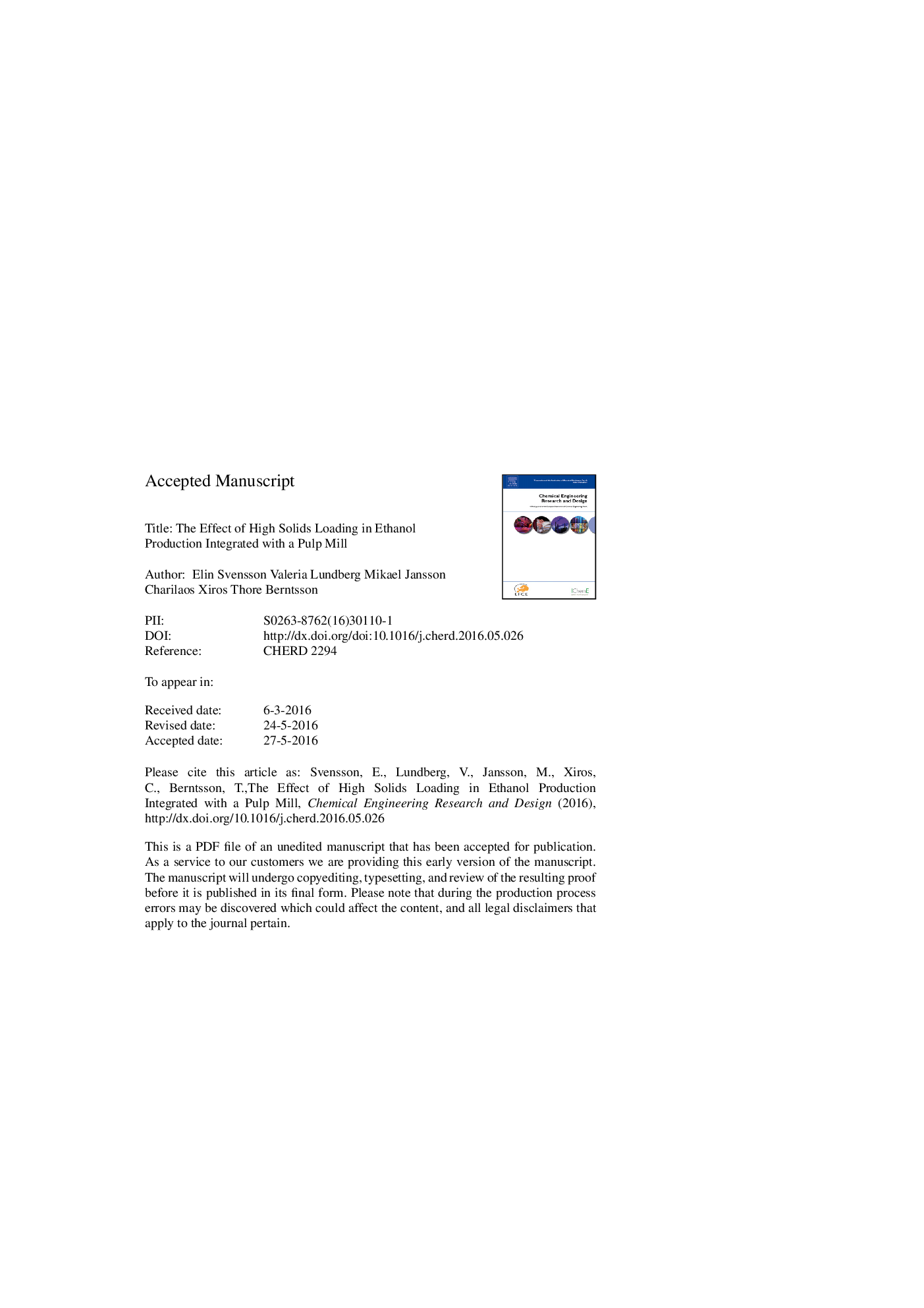| کد مقاله | کد نشریه | سال انتشار | مقاله انگلیسی | نسخه تمام متن |
|---|---|---|---|---|
| 7006454 | 1455157 | 2016 | 29 صفحه PDF | دانلود رایگان |
عنوان انگلیسی مقاله ISI
The effect of high solids loading in ethanol production integrated with a pulp mill
ترجمه فارسی عنوان
تأثیر بارگذاری مواد جامد زیاد در تولید اتانول، یکپارچه سازی با کارخانجات پالپ
دانلود مقاله + سفارش ترجمه
دانلود مقاله ISI انگلیسی
رایگان برای ایرانیان
کلمات کلیدی
ترجمه چکیده
در این مقاله، دو فرایند اتانول با یک کارخانه چوب خمیر چوب، با توجه به تقاضای بخار خود، پتانسیل ادغام فرآیند و سودآوری، مقایسه می شود. فرآیندهای مختلف در بارگذاری مواد جامد در مرحله گهگاهی و مرحله تخمیر و در نتیجه غلظت اتانول متفاوت است. نتایج نشان می دهد که غلظت اتانول بالاتر الزاما منجر به کاهش قابل توجهی در تقاضای بخار نمی شود. در عوض، نشان داده شده است که تقاضای بخار برای تقطیر به شدت وابسته به طراحی کارخانه تقطیر است. با این وجود، بارگذاری مواد جامد بالاتر (گرانروی بالا) می تواند برای درمان فاضلاب از کارخانه تقطیر سودمند باشد. نتایج بارگیری جامدات بالاتر یا در تقاضای بخار کمتری برای تبخیر فاضلاب و یا احتمالا در تقاضای کاهش یافته برای درمان پساب نسبت به فرآیند بارگیری جامدات معمول است. در حالی که نتایج نشان می دهد که غلظت اتانول بالاتر منجر به مزایای در هزینه های انرژی و هزینه های سرمایه گذاری برای کارخانه تقطیر می شود، همچنین نشان می دهد که مزایای بالقوه یک فرآیند گرانش با کاهش انتظار می رود عملکرد اتانول، که منجر به افزایش هزینه مواد اولیه.
موضوعات مرتبط
مهندسی و علوم پایه
مهندسی شیمی
تصفیه و جداسازی
چکیده انگلیسی
In this paper, two ethanol processes integrated with a softwood pulp mill are compared with regard to their steam demand, process integration potential and profitability. The processes differ in the solids loading in the simultaneous saccharification and fermentation step and in the resulting ethanol concentration. The results show that a higher ethanol concentration does not necessarily lead to significant reductions in steam demand. Instead, it is demonstrated that the steam demand for distillation is highly dependent on the design of the distillation plant. Nevertheless, a higher solids loading (high gravity) can be beneficial for the treatment of the stillage from the distillation plant. A higher solids loading results either in a lower steam demand for evaporation of the stillage or possibly in a reduced demand for effluent treatment compared to a conventional solids loading process. While the results show that a higher ethanol concentration leads to advantages in energy costs and investment costs for the distillation plant, they also show that the potential benefits of a high-gravity process are offset by the expected decrease in ethanol yield, which leads to higher raw material costs.
ناشر
Database: Elsevier - ScienceDirect (ساینس دایرکت)
Journal: Chemical Engineering Research and Design - Volume 111, July 2016, Pages 387-402
Journal: Chemical Engineering Research and Design - Volume 111, July 2016, Pages 387-402
نویسندگان
Elin Svensson, Valeria Lundberg, Mikael Jansson, Charilaos Xiros, Thore Berntsson,
